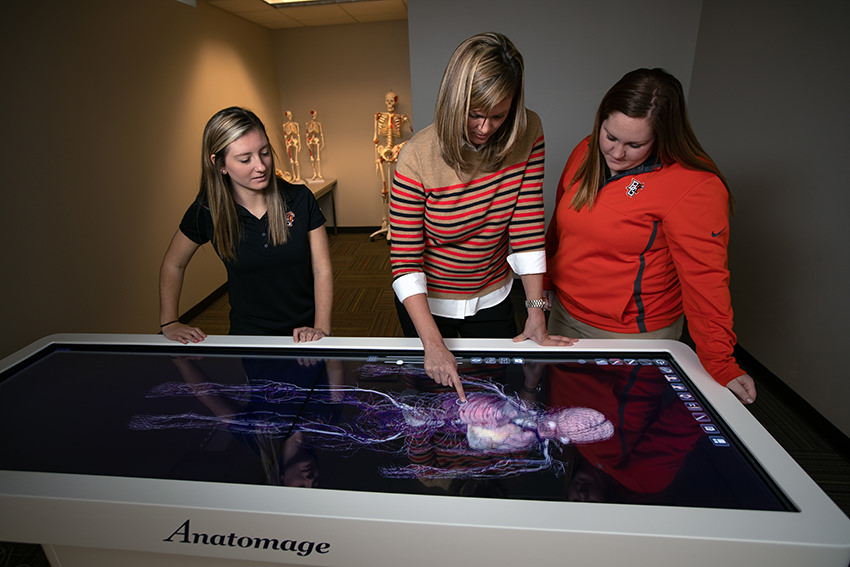New master’s in athletic training prepares students for growing field

By Rachel Szabo
Bowling Green State University is offering a new master’s degree in athletic training, designed to enable students to excel in a growing, in-demand profession. The two-year program prepares students to pass their board of certification examination and work in a variety of health care settings both in the United States and abroad.
Dr. Andrea Cripps, an assistant professor in the School of Human Movement, Sport and Leisure Studies, serves as program director. Cripps holds a Ph.D. in rehabilitation science, along with a master’s degree in physical education and sport with a concentration in exercise science. Her research has focused on the effects on sensory systems after a concussion.
The program faculty have clinical and scholarly experience ranging from health care administration to traumatic brain injury and concussion and orthopedic assessment to evidence-based practice and international health care. Students will be part of immersive clinical experiences with expert clinical instructors.
Athletic trainers are highly qualified, multi-skilled professionals who collaborate with physicians. They focus on prevention, emergency care, clinical diagnosis, therapeutic intervention and rehabilitation of injuries and medical conditions.
According to the Labor of Bureau Statistics, employment of athletic trainers is projected to grow 23% by 2026. Demand for athletic trainers is expected to increase as people become more aware of the effects of sports-related injuries, and as the middle-aged and older population remains active.
Complementing the new degree, the school has acquired a state-of-the-art Anatomage, a virtual reality dissection and anatomy table consisting of a large, touch-screen monitor that substitutes for a traditional cadaver laboratory. The table’s software provides four virtual human cadavers.
“It allows students to explore human anatomy in an interactive model without the cost, mess and smell associated with traditional cadaver experiences,” Cripps said. The table includes images of common athletics injuries. Having access to these images helps students relate what they are seeing clinically to what they are learning in the classroom.
In addition to its use in the new master’s degree clinical anatomy course, the Anatomage table enhances textbook lessons in other anatomy-centered courses, taking studies from two-dimensional to three-dimensional learning.
Most athletic trainers enter the profession for one of two reasons, Cripps said. First, they were athletes who got hurt, and their athletic trainers had huge impacts on their rehabilitation. Second, they enjoy sports, athletics and helping people. Athletic training fits both passions.
“Athletic training is in a unique position,” Cripps said. “We could serve as more of a primary care provider to help relieve some of the burden on traditional physician offices.”
Students are entering the athletic training profession at an ideal time, she said.
“This field is changing and becoming a global industry, with athletic trainers recognized in countries around the world.”
Updated: 04/03/2019 04:20PM
